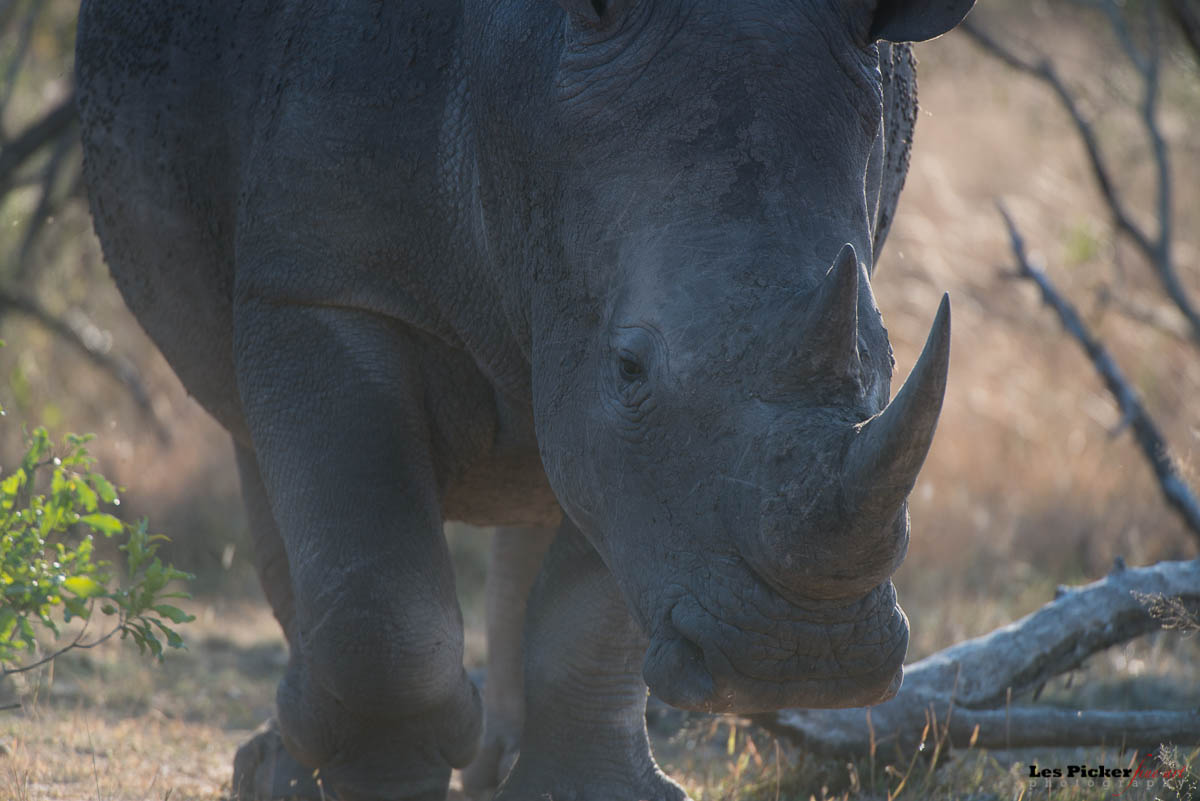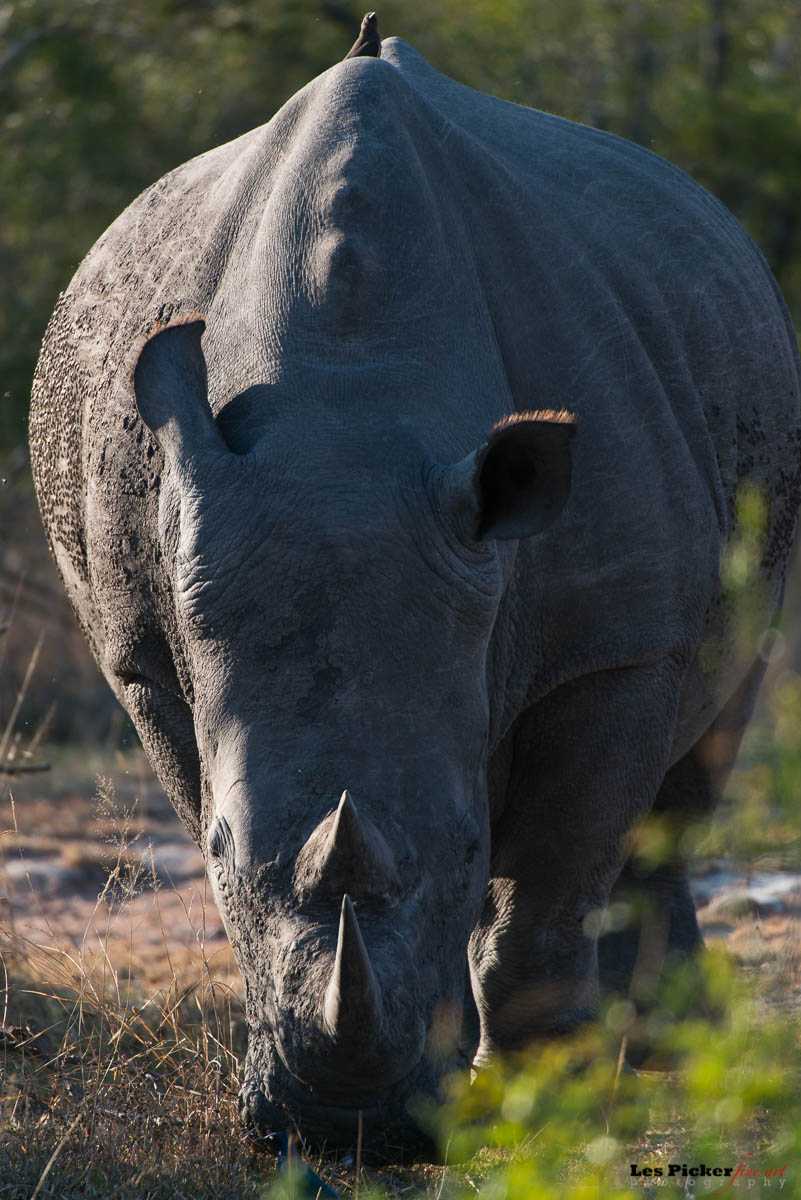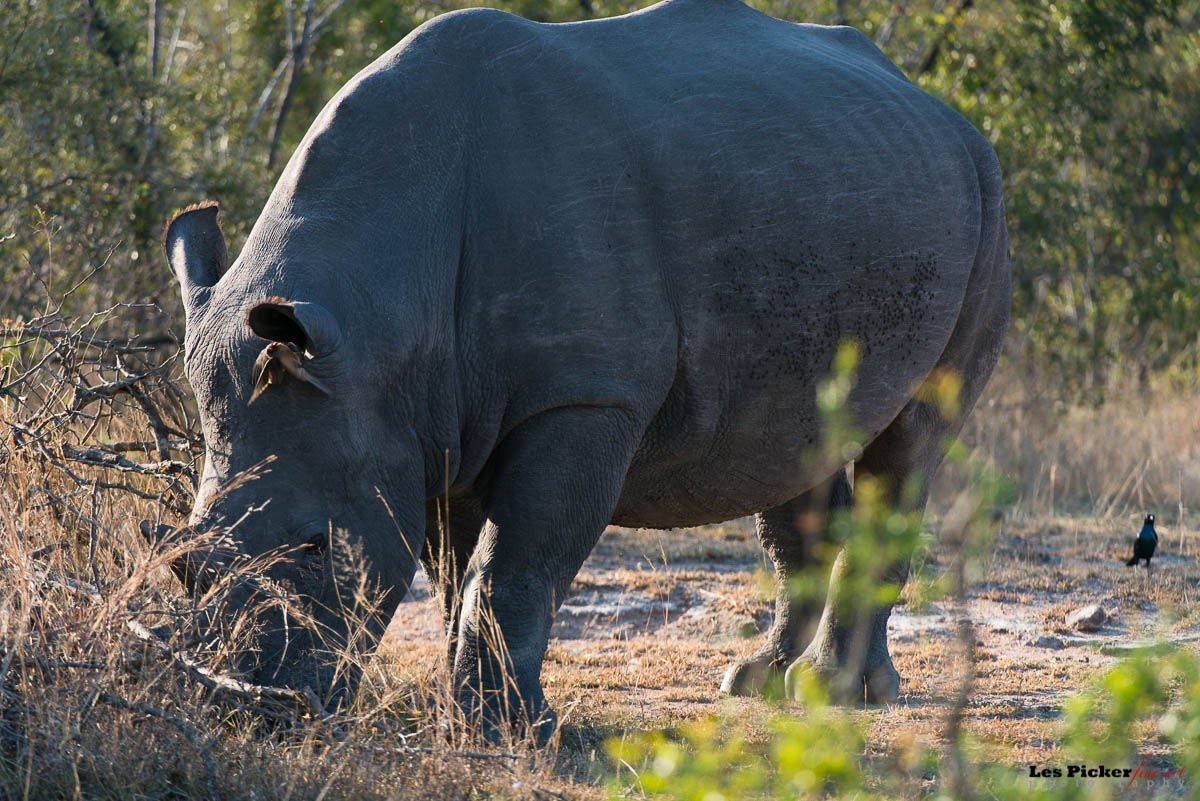
Rhinos!
We had just rounded a curve on a dusty back road in South Africa’s Kruger National Park. What I saw made me gasp. The road dipped and rose again and atop the rise was an animal I first thought was an elephant. It took my staggered brain a second or two to register that I was looking at a prime example of a male white rhinoceros.
It was huge. I slowly inched my car down the hill and up the other side and stopped, shutting off the engine so as not to spook these magnificent beasts and to give myself a steady shooting platform. Amazingly, there were three other rhinos right in front of us in a small clearing, nibbling on grasses and shrubs.
Taking out my trusty Nikon D800 and Nikkor 200-400mm lens with a 1.5x tele-extender, I started snapping away. At some points The animals were so close I had to change to a second body with a 70-200mm attached.

For the next hour we kept shooting away. We were even able to catch the oxpecker, a bird that sits on the back of the rhino, picking off insects. Periodically, they fly into the rhino’s ears and take out ticks. What magnificent beasts.

But all is not well in rhino land. There is a very serious poaching problem in Kruger, to the tune of hundreds of rhinos killed every year, their horns cut off with a chain saw, and their bodies left to rot. All to support the Asian trade (mostly China and Vietnam) for the horns' supposed male penis enhancement and aphrodisiacal properties. Can you believe that in 2014 there are still people who believe in that crap? Sorry, but as a conservationist this slaughter really boils my blood. One would think that as advanced a society as China, for one, would try to play down such superstitious stupidity and make a true concerted effort to stop this carnage. Worldwide populations of tigers, bears, elephants and rhinos are slaughtered to supply this illicit trade.
The authorities are doing what they can, but the costs of monitoring and enforcing are high- in some cases far beyond the government’s resources. But, let’s face it, there is also corruption and insider help involved, both in South Africa and in the countries where the buyers are located. And, given the economic plight of much of the South African population, the sale of even one rhino horn can keep an entire family going for weeks or months.
Conservationists are steamed about the situation, but realistic about what can be done. They are unanimous that innovative solutions must be found. How can you and I help? One easy way is to go online and give what you can afford to nonprofit organizations that work to protect these endangered animals, prevent poaching, and help prosecute poachers and buyers.
Stay tuned for more.